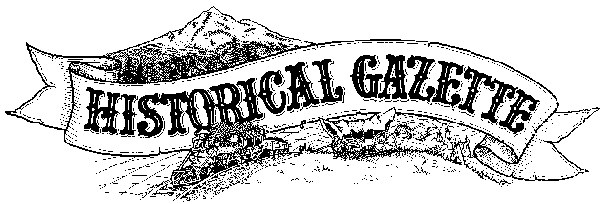Volume Four Number One
Wheat Sustains the Settlement
Pacific NW 1825-1845
Hudson Bay Co. Moves Fort
Better Soil for Growing WheatFt. Vancouver--To till the soil for a ready supply of breadstuffs may be the Hudson Bay Company's (HBC) only hope of doing business so far away from civilization. "We came to the determination to abandon Astoria and go to Ft. Vancouver, as it was a place where we could cultivate the soil and raise our own provisions," wrote Dr. John McLoughlin, Chief Factor for the HBC's Columbia District.
"In the fall of 1825 I received from York Factory a bushel of spring wheat, a bushel of oats, a bushel barley, a bushel Indian corn and a quart of timothy. All of which were sown in proper time and produced well," McLoughlin reported. They continued "extending...improvements" at their new fort situated on the north side of the Columbia river.
HBC's Governor George Simpson noted, "The climate is delightfully temperate from the month of April until the month of October, and from November until March rainy with little or no frost or snow and from the fertility of its soil capable of producing large quantities of grain of every kind." Large grain growing operations are dependent upon the ability to transport the end products: grain, flour and baked goods.
"The Columbia is the only navigable river to the interior from the coast we are acquainted with, it is therefore the only certain outlet for the company's trade west of the mountains," Simpson reported to the company owners in London.
By 1828, Ft. Vancouver raised enough food to feed the servants of the company and sell wintertime supplies to trappers who traded furs and bought their provisions from the company when they brought in their furs. "Our crops this season were very abundant and we have now a two year stock of grain on hand, so that we shall not require either flour or grain from England in the future," wrote Simpson.
Ships from England arrived in the spring, were unloaded and provisions divided for the different forts. The ship, loaded with lumber and other goods for sale, cast off for the Sandwich Islands on a schedule to return by fall so that the ship could again be off-loaded with goods from the Islands and natives to work on the farms. The furs were then loaded onto the ship for return to England. The whole process took about one year if all went according to plan, with the biggest danger being shipwrecks.
Farming Good for Business The HBC's business of trading furs depended upon being able to feed their employees and they knew that they could increase profits by diversifying their goods for sale while reducing their expenses because they would import fewer foodstuffs.
Grain to make bread has always had a ready market in lands with few or no farms. Since grain and flour was often damaged on the voyage around the Horn from England in wooden ships it was important to create a local supply of grain.
"The farming operations at this establishment are of vital importance to the whole business on this side of the continent, and the rapid progress you have already made surpasses most expectations," Simpson wrote to McLoughlin in a letter dated March 15, 1829. He set a goal for "that branch of the business" to "yield 8,000 bushels of grain per annum."
In March 1830, McLoughlin reported that the fort's farm yielded about 1500 bushels wheat. This was not good news for Simpson as he had proposed to the Russian American Fur Co. (RAF) in 1829 that the Hudson Bay Co. sell them "annually from 4 to 5000 bushels of grain," and shipping grain all the way from London would not be profitable. Bridget E. Smith
The stories above, written by our editor, are from the Front Page of this edition. Several other stories are in the Number One edition of our Pacific Northwest Wheat series. Three old photographs adorn the Front Page and several small pieces of line art are on Page Two. Throughout our series we have used original artwork by our friend Chigusa Ohtsuka, a Japanese artist, to illustrate our wheat stories. Some archival photos are used when available, often from the Oregon Historical Society's photo archive. Our series was sponsored by The Wheat Marketing Center.
More history of wheat awaits in Our Number Two
Of the series: Pacific NW Wheat (1845-1860) Wheat: Oregon's Golden Future.

Bridget E. Smith, editor & publisher
Email | Home Page | Historic Headlines
Historical Gazette
Published in Portland, Oregon
© 1991-

